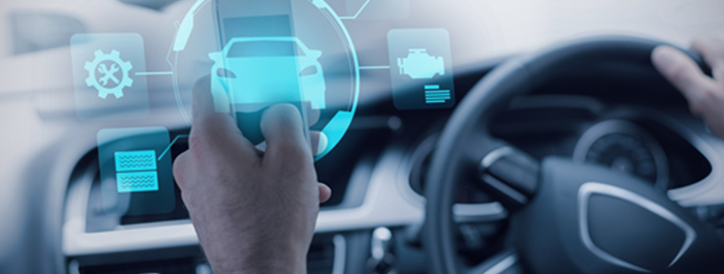It seems like not far from now, society will look more like the Jetsons, with flying cars zipping around and in between skyscrapers that extend into space. Out of all the technological innovations that have occurred in the last century – and there have been a lot – cars appear to have undergone some of the most radical change.
Sure, the desktop computer became mobile and traditional landline telephones turned into tiny, handheld computers we carry in our pockets. But since the advent of the laptop and the smart phone, we haven’t really witnessed any monumental innovation that’s changed the way we view the device.
Cars, on the other hand, are continually evolving, shape-shifting, pushing the envelope on what a vehicle is conceivably capable of. We saw satellites in space control the music in our cars and electric vehicles (EVs) become so ubiquitous that there are now charging stations in grocery store parking lots. And now we’re facing an entirely new frontier. Here are the latest innovations that are proving to disrupt the automobile industry yet again.

1. Automation
Although we’re only at the beginning stages of this technology, it’s obvious that automation is going to make an unprecedented impact on how we operate vehicles – or, in this case, how they will operate themselves.
Therein lies a huge problem. Before we’ll see Ford launch a car without a steering wheel or pedals, manufacturers will need to overcome huge obstacles in terms of legal culpability were the car to malfunction or collide. Is it the “driver’s” fault even though they are not the operator? Is it the manufacturer’s fault for putting an unsafe product on the streets? Or maybe it’s just considered an accident?
Despite the victorious legal breakthrough for Google’s self-driving car system back in 2016, which brought the automated pods one step closer to the public roads, we’re only now beginning to see these in action. For example, Uber’s self-driving car resulted in a fatal crash in Tempe, Arizona in 2018, but a US regulator just recently determined it was due to human error.
This is a huge legal decision and a choice that likely means test drives will start back up. Lawmakers across different states may have different sentiments regarding self-driving vehicles, so depending on where you live, you may have a more or less difficult time taking a driverless ride. Arizona probably won’t allow them on its public streets anytime soon, but if you’re one state over and a few years down the line, you might get Audi service in Las Vegas that’s more comparable to cleaning a computer than cleaning an engine.
2. The Internet of Things (IoT)

That’s right, computers and cars are merging closer and closer – which explains why nVidia, known for its powerful graphics cards, is focusing on building its own independent self-driving car platform.
In recent years, we’ve seen the number of “connected cars” (vehicles that have internet connectivity) start to explode and that number is only going up from here. As IoT technology becomes cheaper and more available, automakers will begin seriously ramping up their production of connected cars for several reasons.
For one, internet connectivity allows companies to release car updates in live time, which is incredibly important in the event of a recall. It also allows them to analyze sets of data to see how the car is performing and gather insights on driver usage.
Secondly, consumers appreciate the seamless integration between their connected driving experiences. Ever since Google Maps began replacing built-in GPS systems, driving apps have become common place with platforms like GasBuddy that can show drivers the cheapest fuel nearby.
3. Nanotechnology
It’s not only cars that are becoming increasingly high-tech; it’s the very also the materials from which they are made. Manufacturers are using nanotechnology – the science of working with atoms and molecules to build devices – to improve vehicle performance and meet the needs of consumers.
Nanotubes, for example, have been used in fuel systems and other parts since the 1990s. The nanocomposite found in many bumpers make some models up to 60% lighter and twice as resistant to impact. Nanocellulose, an inexpensive alternative to carbon fiber, is being studied to make cars lighter and more fuel efficient.
Takeaway
Tech is the way of tomorrow, no doubt. Just be sure to wait until the vehicle is thoroughly tested before you jump on the bandwagon.


